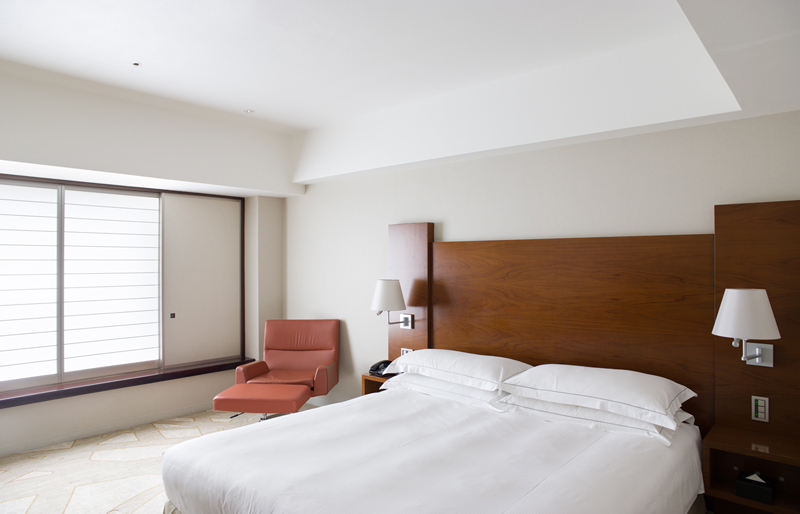
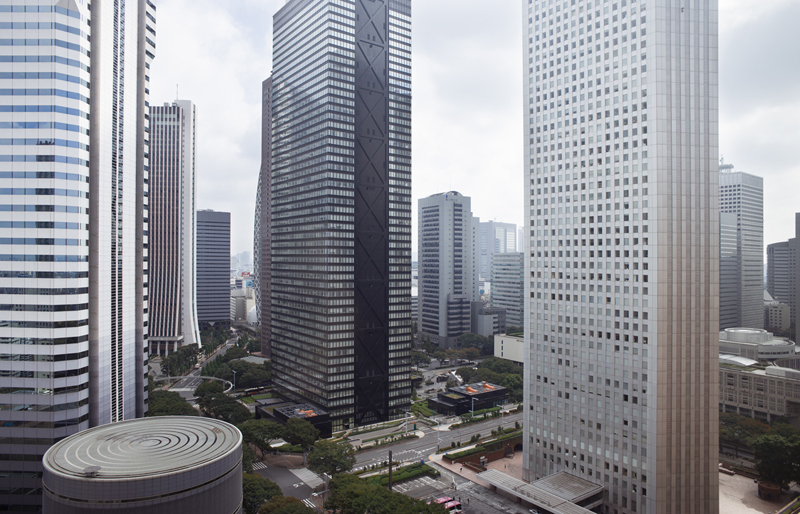 Tokyo HILTON hotel room and view in "Standard" © Roger Eberhard
Tokyo HILTON hotel room and view in "Standard" © Roger Eberhard
Not many encounters between hotels and art have been so thoroughly and meticulously executed as Roger Eberhard's recent photo project "Standard". The book of the Swiss artist juxtaposes a room and the corresponding view of 32 international HILTON hotels on each double page. The location is first revealed by the end of the book. A publisher himself (bfrankbooks.com), Eberhard has a particular eye for the printed image, and uses repetition to force the reader of his book to discover patterns, familiarities and 'standards' in the hotel room. Having previously created other photo projects on hotels, we spoke about his relationship to dwellings and housings, and about "Standard".
Anna-Lena Werner: In your book "Standard" you photographically portrayed 32 international HILTON hotel rooms and their respective window view. What was the initial idea of for this project?
Roger Eberhard: It was about the recognisability and the stage-like environment of these rooms. Already as a student I have been fascinated by places that are built according to a formula; back then I was quite obsessed with the concept of Irish bars that look and are called the same no matter where you are. Back then I had the idea of a project with hotel rooms looking the same everywhere in the world. More recently I returned to the idea when I heard a quote from Conrad Hilton saying, "Every HILTON is a little America". That got me thinking: why do we travel the world, go to different continents and see different cultures, yet stay in a room that looks almost identical everywhere. What does that say about us as creatures of habits and our need for safety?
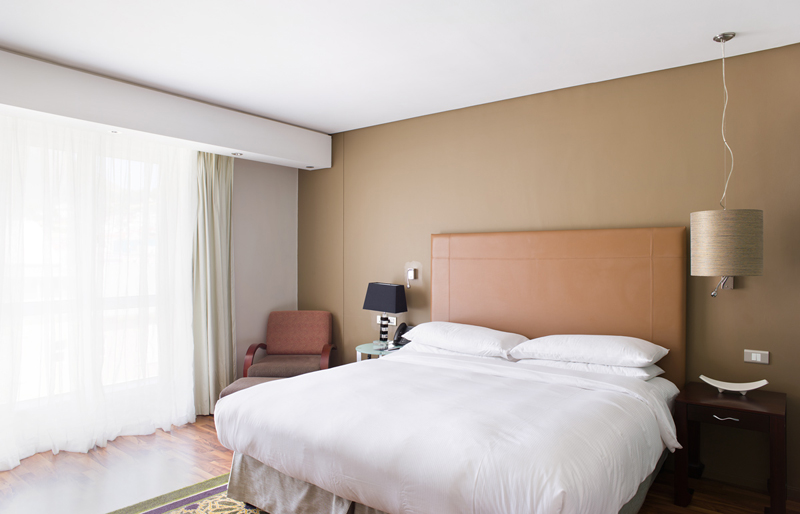
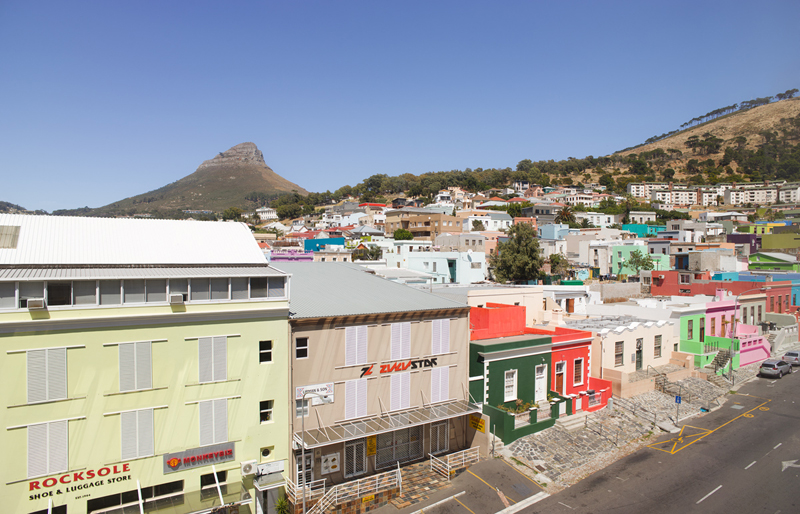 Cape Town HILTON hotel room view in "Standard" © Roger Eberhard
Cape Town HILTON hotel room view in "Standard" © Roger Eberhard
ALW: Was it the quote that made you choose the HILTON hotel chain?
RE: The reason for choosing HILTON is because to me it is the synonym of business hotels and westernisation. In the beginning of the cold war during the 50’s and 60’s Conrad Hilton was one of the first to come up with this idea; with an ideology embodied in a brand. It was also about marking presence – in some cities, especially in Africa and in Eastern Europe, the HILTON hotels were often among the first skyscrapers. In the book you can see that many of the hotels have stunning views. That's simply because they were built prior to all other hotel chains.
ALW: Did you ask HILTON for sponsorship of your project?
RE: No I didn't. I didn't ask them for permission either.
ALW: Should you have?
RE: Although some photographs of the views look spectacular, it was important to me that the project wouldn't be confused with an advert. It was crucial for the project that I could maintain a neutral and documentarian point of view. So when I got a room with a shitty view that was fine with me too.
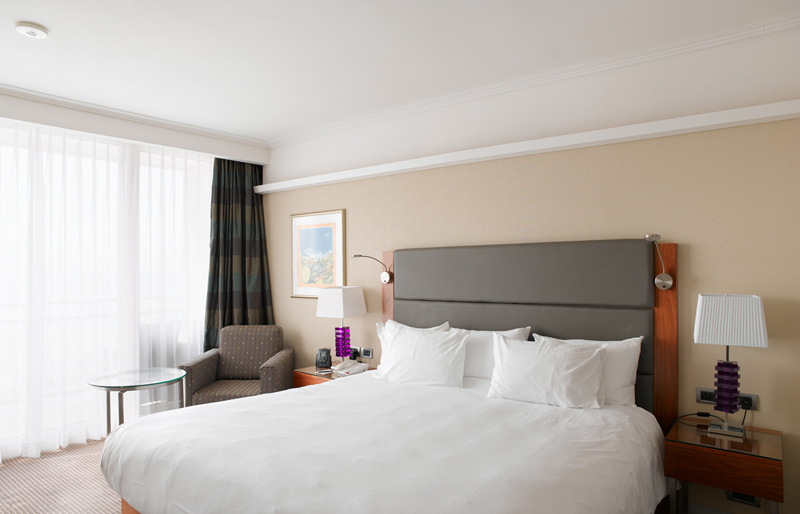
 Tel Aviv HILTON hotel room and view in "Standard" © Roger Eberhard
Tel Aviv HILTON hotel room and view in "Standard" © Roger Eberhard
ALW: All the rooms are photographed from the same perspective and the furniture is always in the same position. How did you organise checking into the right room? What kind of criteria needed to be fulfilled?
RE: My only criterion was that the bed needed to be on the right hand side of the room.
ALW: Why the right side?
RE: My first room was in Berlin and they gave me a room with the bed on the right side. From then on I knew that this was how it needed to be in order to become a typology of rooms.
ALW: How did you communicate this to the hotel staff?
RE: I told them that I am really difficult; that I needed a room where the bed was on the right hand side and that I was not able to sleep any other way. Most of the times they don't have a system where they can see these details on their computer. So in Nairobi, for example, I needed to change my room seven times. My second criterion was a good view, because I wanted to have a visible change of location. Funny enough though, early on I recognised that there was something very standardised about the view as well. Most of the time you cannot tell where in the world you are and quite often you are stuck with a very anonymous sight. It’s almost as if the “view” is it’s own genre, one that we are familiar with, through platforms like Tripadvisor or Booking.com.
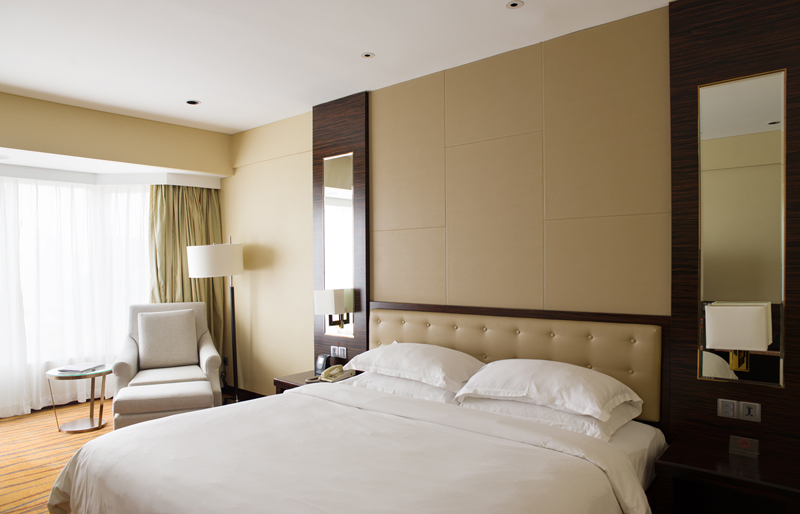
 Shanghai HILTON hotel room and view in "Standard" © Roger Eberhard
Shanghai HILTON hotel room and view in "Standard" © Roger Eberhard

 Shanghai HILTON hotel room and view in "Standard" © Roger Eberhard
Shanghai HILTON hotel room and view in "Standard" © Roger Eberhard
ALW: The title of your project thus refers to the room and the view...
RE: Yes, it refers to both. ”Standard” is referring to the “standard room”, although they don't really have those anymore, they are now called "superior" or “deluxe". But “Standard”, of course, also refers to standardisation of cities – whether they are tailored after our needs or whether the standardisation first created them.
ALW: Why are the pictures' locations only revealed in the end of the book?
RE: That was a big discussion with the publisher. For the viewer it may be nice to read the location on each spread. But I decided to have each page as a guessing game, where the viewer doesn’t know where they are. This way the “Standard” is more emphasized.
ALW: Did you visit all the 32 places in one long travel?
RE: The whole project took me exactly one year, from May 2015 to May 2016. During my biggest trip I visited 14 countries in a row. That was a trip around the world in one month. That allowed me to get a bulk of the series done in a relatively short time. The rest of the cities I did as singular trips. And whenever I had a job somewhere I would book a HILTON hotel room.
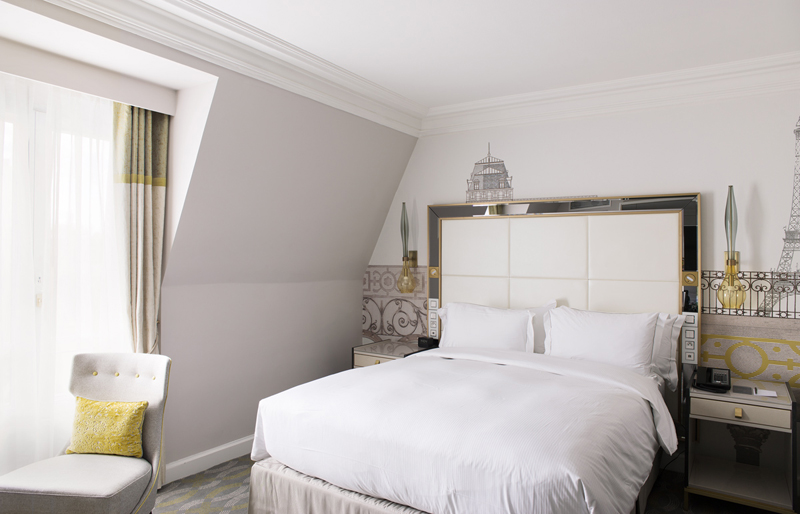
 Paris HILTON hotel room and view in "Standard" © Roger Eberhard
Paris HILTON hotel room and view in "Standard" © Roger Eberhard

 Paris HILTON hotel room and view in "Standard" © Roger Eberhard
Paris HILTON hotel room and view in "Standard" © Roger Eberhard
ALW: During your travels, did you get this standardised feeling that you had predicted before starting the project?
RE: On the trip around the world it was quite surreal. I would wake up in Sydney, the next day in Tokyo, the day after in Hanoi. I often discovered these repetitive items, for example the alarm clock. Since I stayed in the rooms myself I am present in each image. There is a performative aspect to this project; I did exactly what I critique: traveling to all these foreign places, with no time to really experiencing them, except through the windows of my hotel rooms.
ALW: It must have been quite self-confrontational...
RE: Especially the flights. I was alone most of the time. Benedict Wells, who also wrote the preface to the book, wrote about traveling that "the nicest thing is to see your excitement reflected in your friend's face."

 "Shanty Town Deluxe" © Roger Eberhard
"Shanty Town Deluxe" © Roger Eberhard

 "Shanty Town Deluxe" © Roger Eberhard
"Shanty Town Deluxe" © Roger Eberhard
ALW: This is your third project on hotels. Why are they so interesting to you?
RE: I use hotels as placeholders to talk about homes and dwellings in general, and the architecture of living. I am talking about completely different issues in each of the projects. The series "Shanty Town Deluxe" in South Africa is about a place that treats poverty as a theme park. It is a luxury hotel with little bungalows looking like shacks. It’s a place where the rich can experience poverty for one night without having to deny themselves the luxury of room service and Wi-Fi.

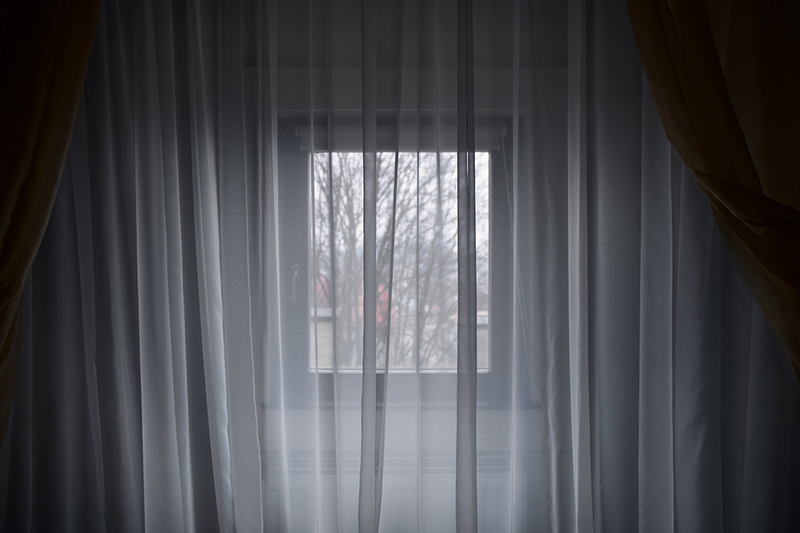 "Aussicht" © Roger Eberhard
"Aussicht" © Roger Eberhard

 "Aussicht" © Roger Eberhard
"Aussicht" © Roger Eberhard
ALW: Your second hotel project is called "Aussicht" [view] and shows greyish views from the luxury hotel “Citadel Inn” in Ukraine. Built in the 19th century, German Nazis established the concentration camp “Stalag-328” during World War II inside the building. 150.000 people were tortured to death or died in this place, while today not even a sign reminds today's hotel guests of the past...
RE: …This project was about the question if buildings could be seen as neutral and whether they can be used without having to refer to their past. It poses the question how to establish a sense of memory within photographs. For “Aussicht” I only photographed views from the room and the hotel from the outside.
ALW: Like your "Standard" project suggests, hotels, naturally, are quite random and perhaps the opposite of what we consider individual...
RE: ...That's why they generally work so well as vessels to tell your own story. You can fill them up with your own thoughts.
ALW: Do you see yourself as a storyteller?
RE: I am not sure. "Standard" is a documentary project. I am not faking or changing anything. Only through repetition, sequencing and the typology, it starts to tell a story.
ALW: Will you continue making projects about hotels?
RE: I think for now I am done with hotels, I would like to be outside, somewhere remote and in the open. But who knows, so far nothing is planned.
"Standard" has been published 2016 with Schneidegger & Spiess
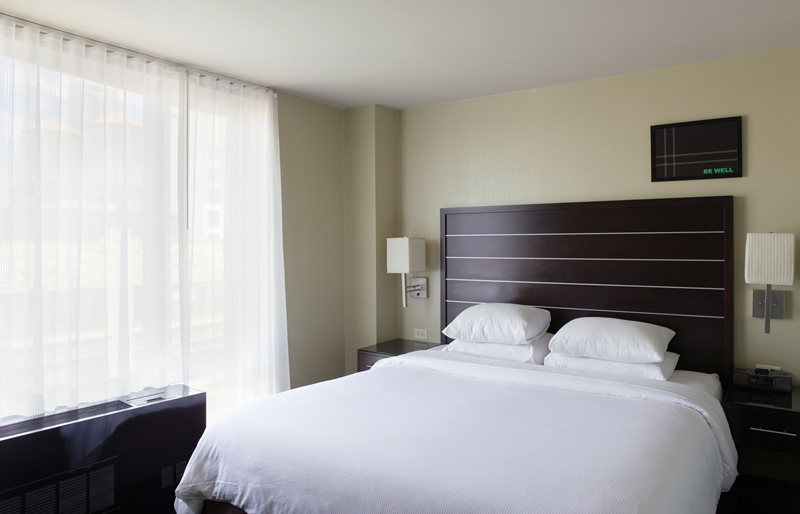
 New York Hilton hotel room and view in "Standard" © Roger Eberhard
New York Hilton hotel room and view in "Standard" © Roger Eberhard